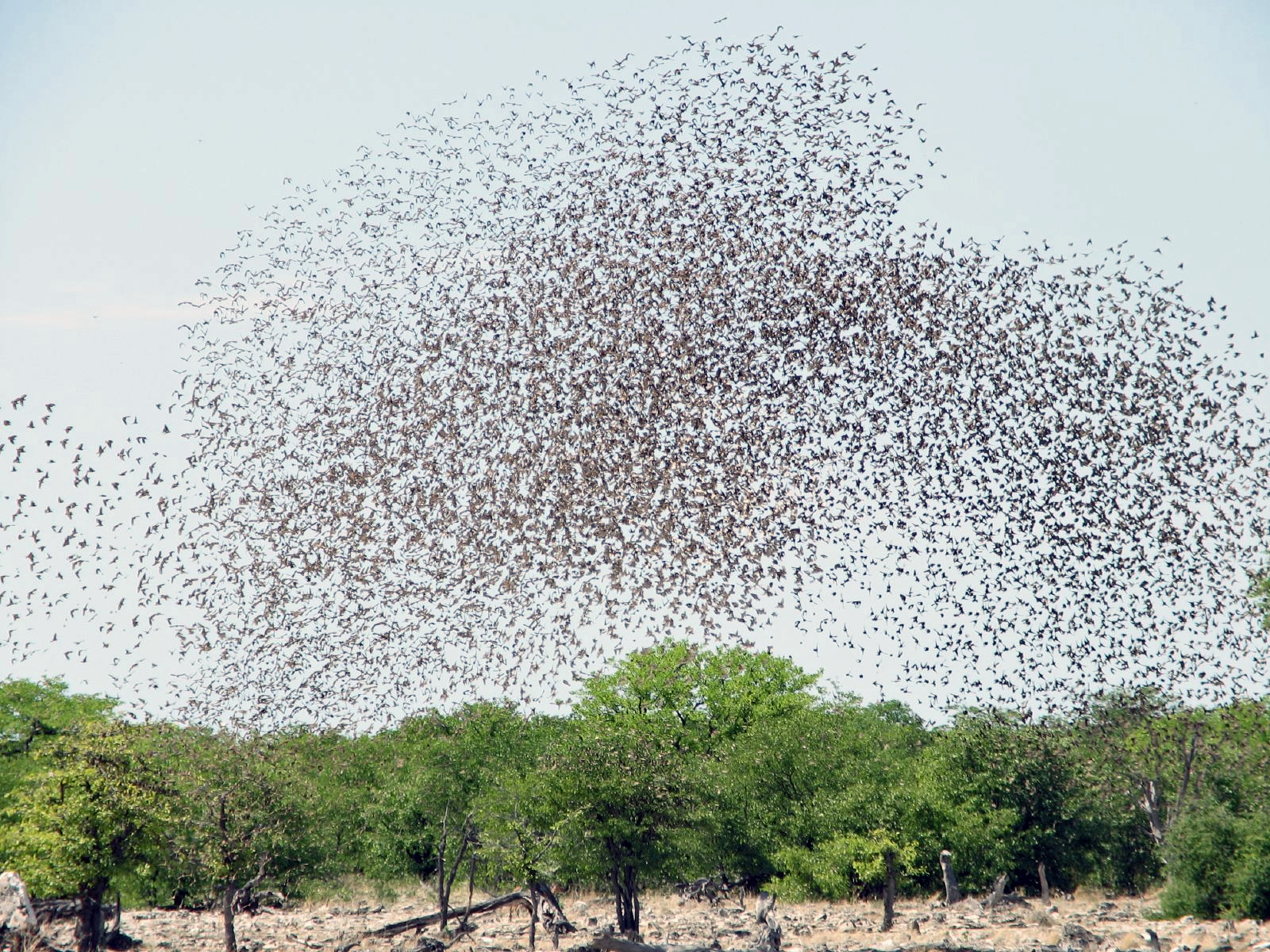|
Elk Antipredator Behavior
Antipredatory behaviors are actions an animal performs to reduce or rid themselves of the risk of being prey. Many studies have been done on elk to see what their antipredator behaviors consist of. One of the most commonly known consequences of the large elk population throughout Yellowstone National Park is the significant decline in the recruitment of aspen (Populus tremuloides). Wolves were reintroduced to the park seventeen years ago. The decrease in elk that the wolves brought should allow the aspen to recuperate and be able to mature once again. The anti-predatory responses moved elk further into the trees and away from young aspen groves. If these responses can have such a profound effect on the community structure itself, there are likely to be important consequences for the herbivore that adopts these new responses. One of these major costs of anti-predatory behavior of elk is a compromised diet that results in poor health. Elk must do what is necessary to survive, even wh ... [...More Info...] [...Related Items...] OR: [Wikipedia] [Google] [Baidu] |
Prey
Predation is a biological interaction in which one organism, the predator, kills and eats another organism, its prey. It is one of a family of common feeding behaviours that includes parasitism and micropredation (which usually do not kill the host) and parasitoidism (which always does, eventually). It is distinct from scavenging on dead prey, though many predators also scavenge; it overlaps with herbivory, as seed predators and destructive frugivores are predators. Predation behavior varies significantly depending on the organism. Many predators, especially carnivores, have evolved distinct hunting strategies. Pursuit predation involves the active search for and pursuit of prey, whilst ambush predators instead wait for prey to present an opportunity for capture, and often use stealth or aggressive mimicry. Other predators are opportunistic or omnivorous and only practice predation occasionally. Most obligate carnivores are specialized for hunting. They may ha ... [...More Info...] [...Related Items...] OR: [Wikipedia] [Google] [Baidu] |
Yellowstone National Park
Yellowstone National Park is a List of national parks of the United States, national park of the United States located in the northwest corner of Wyoming, with small portions extending into Montana and Idaho. It was established by the 42nd United States Congress, 42nd U.S. Congress through the Yellowstone National Park Protection Act and signed into law by President Ulysses S. Grant on March 1, 1872. Yellowstone was the first national park in the US, and is also widely understood to be the first national park in the world. The park is known for List of animals of Yellowstone, its wildlife and Geothermal areas of Yellowstone, its many geothermal features, especially the Old Faithful geyser, one of its most popular. While it represents many types of biomes, the subalpine forest is the most abundant. It is part of the South Central Rockies forests ecoregion. While Native Americans have lived in the Yellowstone region for at least 11,000 years, aside from visits by Mountain ... [...More Info...] [...Related Items...] OR: [Wikipedia] [Google] [Baidu] |
Aspen
Aspen is a common name for certain tree species in the Populus sect. Populus, of the ''Populus'' (poplar) genus. Species These species are called aspens: * ''Populus adenopoda'' – Chinese aspen (China, south of ''P. tremula'') * ''Populus davidiana'' – Korean aspen (Eastern Asia) * ''Populus grandidentata'' – Bigtooth aspen (eastern North America, south of ''P. tremuloides'') * ''Populus sieboldii'' – Japanese aspen (Japan) * ''Populus tremula'' – Eurasian aspen (northern Europe and Asia) * ''Populus tremuloides'' – Quaking aspen or trembling aspen (northern and western North America) Habitat and longevity file:20130713Zitterpappel.ogv, The trembling of the leaves of the Populus tremula, trembling aspen Aspen trees are all native to cold regions with cool summers, in the north of the Northern Hemisphere, northern hemisphere, extending south at high-altitude areas such as mountains or high plains. They are all medium-sized deciduous trees reaching tall. In North Am ... [...More Info...] [...Related Items...] OR: [Wikipedia] [Google] [Baidu] |
Wolves
The wolf (''Canis lupus''; : wolves), also known as the grey wolf or gray wolf, is a canine native to Eurasia and North America. More than thirty subspecies of ''Canis lupus'' have been recognized, including the dog and dingo, though grey wolves, as popularly understood, only comprise naturally-occurring wild subspecies. The wolf is the largest wild extant member of the family Canidae, and is further distinguished from other '' Canis'' species by its less pointed ears and muzzle, as well as a shorter torso and a longer tail. The wolf is nonetheless related closely enough to smaller ''Canis'' species, such as the coyote and the golden jackal, to produce fertile hybrids with them. The wolf's fur is usually mottled white, brown, grey, and black, although subspecies in the arctic region may be nearly all white. Of all members of the genus ''Canis'', the wolf is most specialized for cooperative game hunting as demonstrated by its physical adaptations to tackling large p ... [...More Info...] [...Related Items...] OR: [Wikipedia] [Google] [Baidu] |
Herbivore
A herbivore is an animal anatomically and physiologically evolved to feed on plants, especially upon vascular tissues such as foliage, fruits or seeds, as the main component of its diet. These more broadly also encompass animals that eat non-vascular autotrophs such as mosses, algae and lichens, but do not include those feeding on decomposed plant matters (i.e. detritivores) or macrofungi (i.e. fungivores). As a result of their plant-based diet, herbivorous animals typically have mouth structures ( jaws or mouthparts) well adapted to mechanically break down plant materials, and their digestive systems have special enzymes (e.g. amylase and cellulase) to digest polysaccharides. Grazing herbivores such as horses and cattles have wide flat- crowned teeth that are better adapted for grinding grass, tree bark and other tougher lignin-containing materials, and many of them evolved rumination or cecotropic behaviors to better extract nutrients from plants. A larg ... [...More Info...] [...Related Items...] OR: [Wikipedia] [Google] [Baidu] |
Conifer
Conifers () are a group of conifer cone, cone-bearing Spermatophyte, seed plants, a subset of gymnosperms. Scientifically, they make up the phylum, division Pinophyta (), also known as Coniferophyta () or Coniferae. The division contains a single extant class (biology), class, Pinopsida. All Neontology, extant conifers are perennial plant, perennial woody plants with secondary growth. The majority are trees, though a few are shrubs. Examples include Cedrus, cedars, Pseudotsuga, Douglas-firs, Cupressaceae, cypresses, firs, junipers, Agathis, kauri, larches, pines, Tsuga, hemlocks, Sequoioideae, redwoods, spruces, and Taxaceae, yews.Campbell, Reece, "Phylum Coniferophyta". ''Biology''. 7th ed. 2005. Print. p. 595. As of 2002, Pinophyta contained seven families, 60 to 65 genera, and more than 600 living species. Although the total number of species is relatively small, conifers are ecology, ecologically important. They are the dominant plants over large areas of land, most notably ... [...More Info...] [...Related Items...] OR: [Wikipedia] [Google] [Baidu] |
Vigilance (behavioural Ecology)
Vigilance, in the field of behavioral ecology, behavioural ecology, refers to an animal's monitoring of its surroundings in order to heighten awareness of predation, predator presence. Vigilance is an important behaviour during foraging as animals must often venture away from the safety of shelter to find food. However, being vigilant comes at the expense of time spent feeding, so there is a trade-off between the two. The length of time animals devote to vigilance is dependent on many factors including predation risk and hunger (motivational state), hunger. Vigilance is often observed in animals that forage in groups, such as yellow-eyed juncos (''Junco phaeonutus'') and meerkats (''Suricata suricatta''). Foraging in groups selfish herd theory, dilutes an individual's risk of predation, and allows them to reduce their own vigilance while the vigilance of the group is maintained.Davies, N.B., Krebs, J.R. & West, S.A. (2012) An Introduction to Behavioural Ecology 4th edn, Wiley-Blackwe ... [...More Info...] [...Related Items...] OR: [Wikipedia] [Google] [Baidu] |
Physiological
Physiology (; ) is the science, scientific study of function (biology), functions and mechanism (biology), mechanisms in a life, living system. As a branches of science, subdiscipline of biology, physiology focuses on how organisms, organ systems, individual organ (biology), organs, cell (biology), cells, and biomolecules carry out chemistry, chemical and physics, physical functions in a living system. According to the classes of organisms, the field can be divided into clinical physiology, medical physiology, Zoology#Physiology, animal physiology, plant physiology, cell physiology, and comparative physiology. Central to physiological functioning are biophysics, biophysical and biochemical processes, homeostasis, homeostatic control mechanisms, and cell signaling, communication between cells. ''Physiological state'' is the condition of normal function. In contrast, ''pathology, pathological state'' refers to abnormality (behavior), abnormal conditions, including human diseases. ... [...More Info...] [...Related Items...] OR: [Wikipedia] [Google] [Baidu] |
Miscarriage
Miscarriage, also known in medical terms as a spontaneous abortion, is an end to pregnancy resulting in the loss and expulsion of an embryo or fetus from the womb before it can fetal viability, survive independently. Miscarriage before 6 weeks of gestation is defined as biochemical loss by European Society of Human Reproduction and Embryology, ESHRE. Once ultrasound or histological evidence shows that a pregnancy has existed, the term used is clinical miscarriage, which can be "early" (before 12 weeks) or "late" (between 12 and 21 weeks). Spontaneous fetal termination after 20 weeks of gestation is known as a stillbirth. The term ''miscarriage'' is sometimes used to refer to all forms of pregnancy loss and pregnancy with abortive outcomes before 20 weeks of gestation. The most common symptom of a miscarriage is vaginal bleeding, with or without pain. Tissue (biology), Tissue and clot-like material may leave the uterus and pass through and out of the vagina. Risk factors for misc ... [...More Info...] [...Related Items...] OR: [Wikipedia] [Google] [Baidu] |
Infertility
In biology, infertility is the inability of a male and female organism to Sexual reproduction, reproduce. It is usually not the natural state of a healthy organism that has reached sexual maturity, so children who have not undergone puberty, which is the body's start of fertility, reproductive capacity, are excluded. It is also a normal state in women after menopause. In humans, ''infertility'' is defined as the inability to become pregnant after at least one year of unprotected and regular sexual intercourse involving a male and female partner. There are many causes of infertility, including some that Assisted reproductive technology, medical intervention can treat. Estimates from 1997 suggest that worldwide about five percent of all heterosexual couples have an unresolved problem with infertility. Many more couples, however, experience involuntary childlessness for at least one year, with estimates ranging from 12% to 28%. Male infertility is responsible for 20–30% of infert ... [...More Info...] [...Related Items...] OR: [Wikipedia] [Google] [Baidu] |





